The Salinas River – Words Change
page 1

The American Nile
155 miles long, running mostly underground, The Salinas River flows North, like the Nile. Traveling along the Santa Lucia mountains, it connects missions, abandoned military bases, vineyards, prison towns, the big Ag of the nation's salad bowl, a powerplant, and a fishing village to the Monterey Bay. The topsoil it deposits is 17 feet thick and black. The richest in the world.
Its path used to be known as the El Camino Real. Now, it's called the "101 from San Luis Obisbo, exit at Salinas, and take the 183." Drive towards the enormous smoke stacks and then steer into the water. Watch for otters.
The River reaches the Bay twice, with two engineered mouths.
page 2
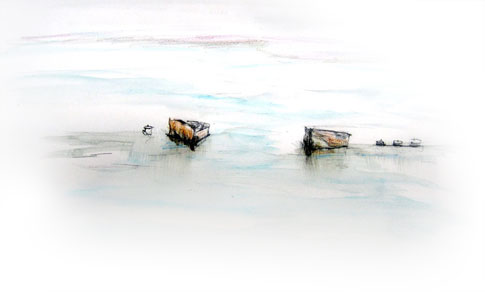
Two Endings
The southern mouth arrives directly from Castroville, the artichoke capitol of the world, in a channel that begins beside the apparition of seven drained lakes, now full of agriculture and train tracks. The lakes nearly appear in the rain. Here, puddles are ghosts of lakes.
The channel here is straight, and was cut in 1917 to prove a point. Reclamation – reclaiming water from the wildness of nature, for the purpose of irrigation. To manifest. To move West. Then, to stay still.
The northern mouth, at Moss Landing, leapt out of its cement channel during the earthquake of 1906. The water pools at the feet of the powerplant and is sucked though giant pipes, into the bay.
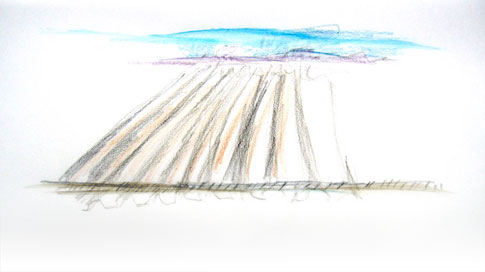
page 3
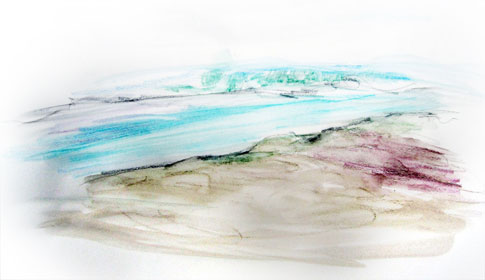
The Gabilan
Moss Landing is in the Gabilan Watershed, where ditches are ghosts of creeks. Fremont Peak, the origin of the creeks, catches the water from the sky and sloughs off the unusual soil.
First farmed by the Ohlone Indians, the watershed became ranch land. The Salinas Valley was without fences, and the animals roamed the grasslands. In the early 1800s, cows were led to the beach for slaughter in the sand. Their hides became the belts that spun through gears of the industrial revolution.
Once gold appeared in the hills, the cows and cattle shifted to the foothills of the Sierras, and the Yankees founded Salinas – intended as a Jeffersonian City of agricultural innovation. The riparian and lands and lakebeds were drained by Chinese and then Japanese laborers. The watershed transformed into a geometric network of rows, framed by shining creeks and rivers, redirected into fallows, and channeled into ditches.
page 4
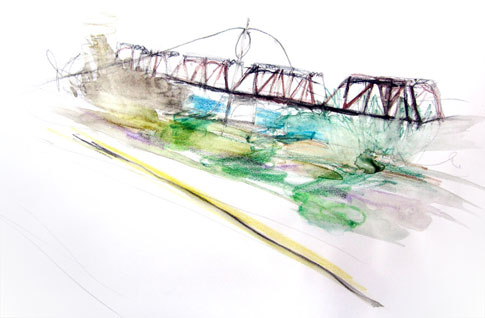
War
The Gabilan had been shaped by wars – The Indian Wars and the silent war of colonialism dislocated the waterhshed's earliest civilization. The Mexican Revolution brought the ranchers. The Great War brought the technology of mass production, the richest crop in memory – Salinas overflowed with prosperity. Trains carried the water from the Gabilan in the forms of lettuce, fish, and sugarbeets and ice across the nation. With WWII, came the chemical revolution, and the row crops ruled the watershed. Pesticides transformed the ecology and biology of the Gabilan. A million soldiers passed through adjoining military bases throughout the 20th century. The base outlawed the removal of invasive plants, in order to halt erosion. The soldiers remember the training, the fog, and the fields of ice plants overwhelming everything.
page 5

Reengineering Water
With the giant clay pipes of the Bureau of Reclamation, the water and agricultural chemicals of the creeks of Salinas were channeled into irrigation ditches. Carved along the sides of the roads, through backyards and industrial areas, the creeks are isolated by mud and concrete walls. Most people have forgotten their names: Gabilan, Natividad, Alisal and Santa Rita.
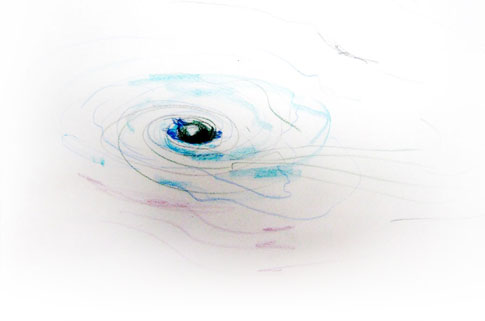
page 6
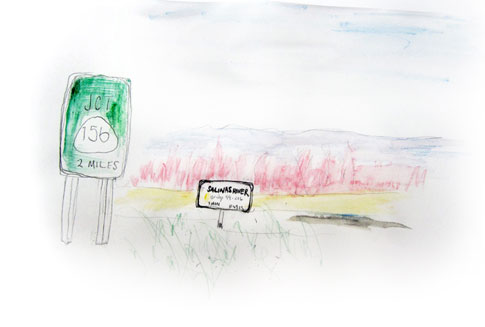
Reengineered Language
The Return of the Natives, a native plant advocacy group for the Gabilan Watershed, has declared ‘War on Weeds.' Re-appropriating the advertising slogan used to sell Dow Chemical pesticides, the group attacks ice plants with native grasses, that keep the topsoil in place, and clean the creeks with their roots.
Naming the creeks is their greatest weapon. In a county controlled by Ag, a ditch is a useful, dirty, sometimes deadly thing. Defining a ditch as a creek, calls out to wild longing.
This would not be the first language to change since the Bureau of Reclamation and Army Core of Engineers began their competitive pursuit of concrete victory over interconnected biology.
Over time, the language of the watershed has shifted and split.
Like the Salinas.
Conservation (1800): To ensure that not a drop of water reaches the ocean without being put to human use.
Reclamation (1800): To reclaim the rich topsoil submerged under lakes and other bodies for human use, and to harness water for irrigation and development.
RELATED PLACES Bay Area, Salinas River



